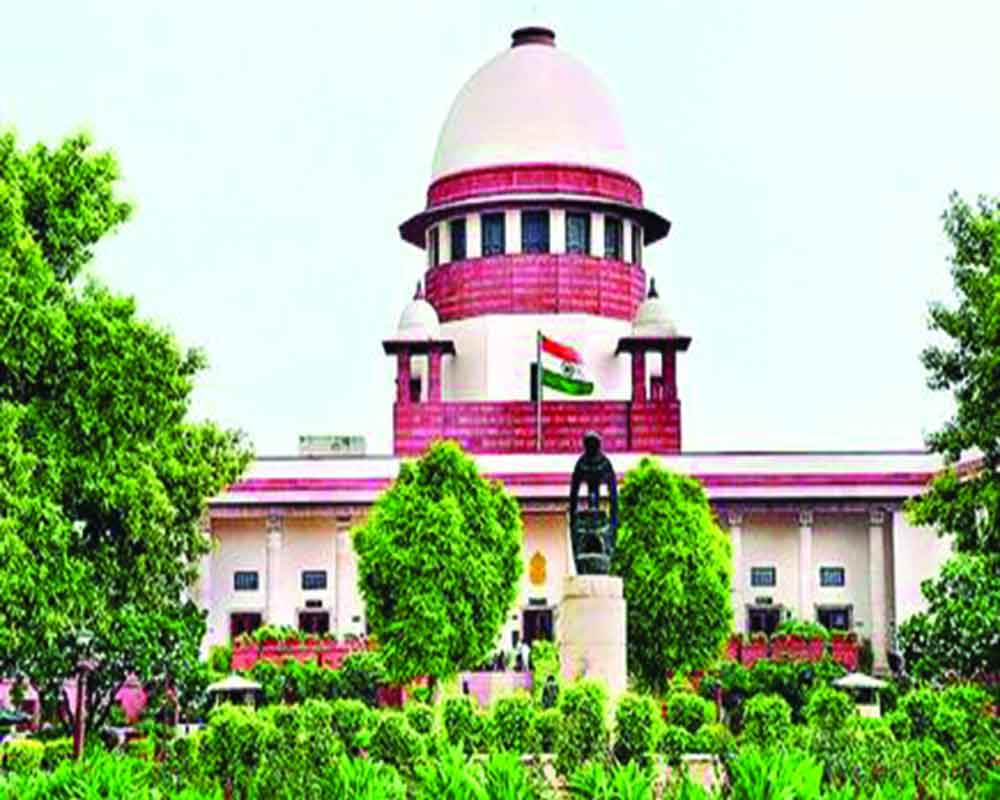While the SC pulls up the police, the Delhi HC seeks action on FIRs against BJP leaders spewing hate rhetoric
This has now become quite the norm in this country, the judiciary not only becoming the voice of reason in our collective heads but telling the executive what it knows but chooses to forget all too conveniently according to political imperatives. First, it was the Supreme Court, which rapped the Delhi Police for its failure to control violence and allowing the situation in north-east Delhi, arising out of protests over the citizenship law, to drift. Second, the Delhi High Court, too, shamed it and cautioned the authorities to remain alert so that the carnage of the 1984 anti-Sikh riots was not repeated. It further sought registration of FIRs in all cases related to hate speeches and pulled it up for not acting against BJP leader Kapil Mishra.
The top court came down hard on the police, lamenting its lack of professionalism and shaming it for waiting to take orders from the powers that be. No matter what, the court chided, it could not hide under the fig leaf of acting under the Government’s direction and not dispense its basic, clinical duty, that of maintaining law and order. Undoubtedly, Delhi police has a tough balancing act to do, considering the fact that unlike other forces in the country, which report directly to the respective State Governments, it has to take orders from the Ministry of Home Affairs. But is the mandate to toe its political master’s choice above its duty to keep the peace? One of the principles of good policing is that the forces should function without any fear and favour, which they haven’t. The failure of the top brass, too, in guiding junior colleagues and building their preparedness to face a riot-like scenario is all too apparent. With Amulya Patnaik’s tenure coming to an end this month, his successor SN Shrivastava, who will take charge as the Delhi Police chief early next month, has a grave challenge ahead: To neutralise the criticism, instill a sense of purpose and impartiality within the men in uniform and win back the trust of the community, which at this point of time is non-existent. The police has to appear to be above board and with images and videos in a digitally aware society, it has been seen as nothing but a wimp. Even in the latest bout of violence, the police failed to deploy its existing strengths optimally despite clear signs over the last three days that they would be needed in large numbers. Yet its active involvement in the violence speaks volumes about it being tardy and directionless in its approach. Excuses for the lack of preparedness would be far-fetched for in the present case, the BJP leader, whose provocative words were the turning point in protests becoming violent, issued an ultimatum right in front of a senior police officer. An armed man had the gumption to confront an unarmed police officer, intimidate him and force him back with his hands raised before he fired a few shots in the air. This acquiescence to a member of a Central ruling party seems shocking considering that the same force had barged into the premises of a hostel library, hunting down students with the use of lathis and tear gas, just because they represented dissent. It is this partisan conduct of the police that has sent the wrong message to lumpens who feel emboldened by the fact that they stand protected because of their ideology and the party they represent. Before the recent clashes, the Delhi police has been fairly consistent in its crackdowns, be it at Tees Hazari during the lawyer-police clashes, at the Jamia Millia Islamia University, Shaheen Bagh and the Jawaharlal Nehru University to name a few. So it cannot claim a defanged status now. Given the pathetic state of affairs in public administration and the feeble claims of the police, the top court’s anguish is understandable. Which is why it deferred hearing the plea for shifting the Shaheen Bagh protesters until March 23. In doing so, it has given the executive a chance at dialogue and resolving the situation by simmering down tensions. This brings into the picture the role of the Government in containing inflammable situations that cost human lives. No matter how many reforms are brought about in the police force or how much the overhaul, the executive must have the political will to steer the discourse amicably. A confrontationist approach works only when you are in the Opposition party and not when you are in governance. The BJP has lost Delhi for sure but it cannot cry over spilt milk. If indeed it wants to contain the damage done to its declared intent, then it must attempt a dispute resolution rather than passing on that agency to the courts. No citizen wants a Government which has to be sermonised. Every citizen expects a Government to be responsive, not abrasive.
(Courtesy: The Pioneer)








 OpinionExpress.In
OpinionExpress.In















Comments (0)